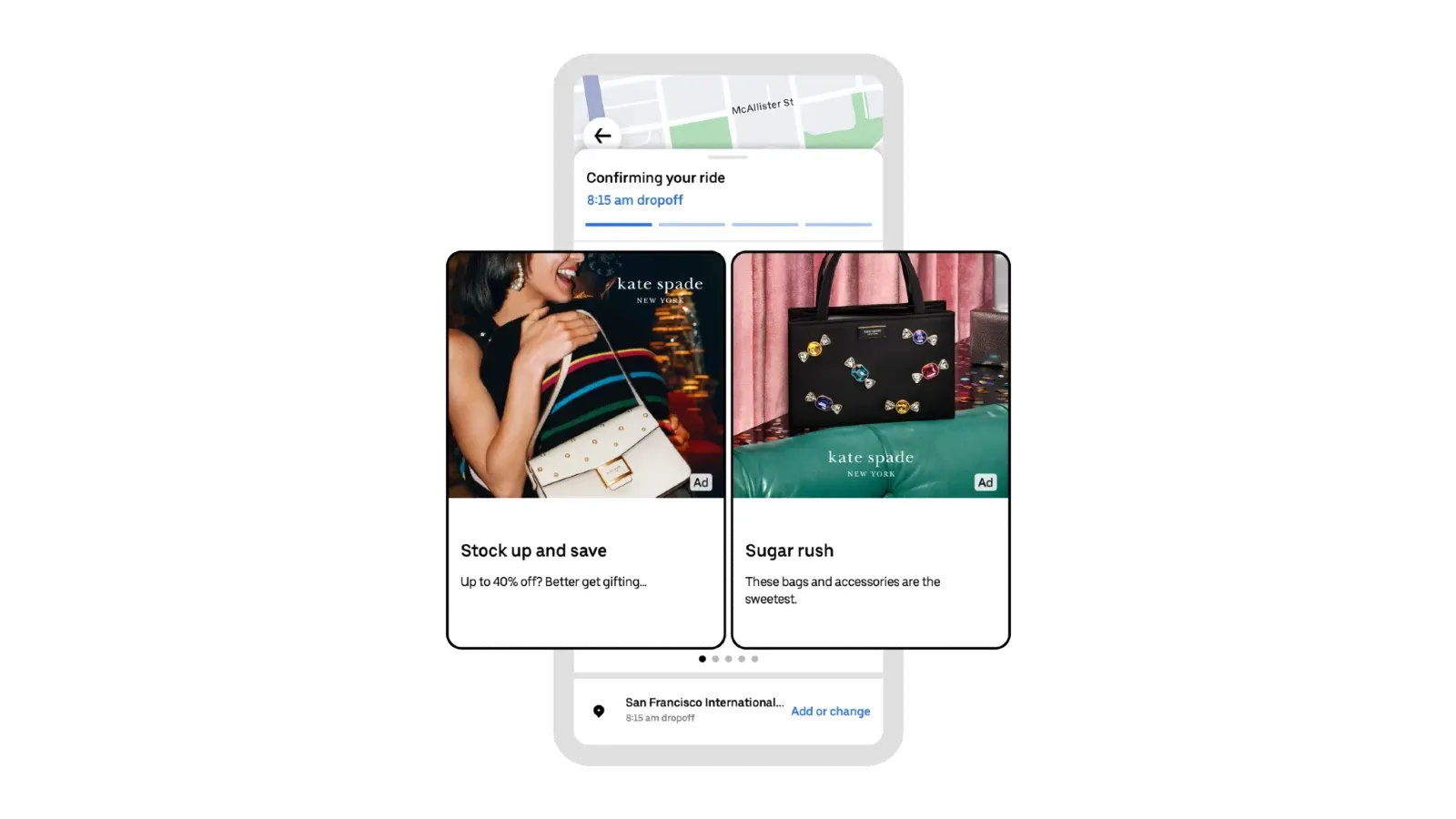Uber opens up Journey Ads to programmatic buying
Uber this week announced an expansion of its Journey Ads on Uber Rides, allowing advertisers to purchase ad space programmatically through leading Demand-Side Platforms (DSPs), only via PG deals.

Uber this week announced an expansion of its Journey Ads on Uber Rides, allowing advertisers to purchase ad space programmatically through leading Demand-Side Platforms (DSPs), only via PG deals.
What are Journey Ads?
Launched in 2022, Journey Ads is Uber's in-app advertising platform designed to reach riders during their Uber rides. It offers display and video ad formats with targeting capabilities based on demographics and user behavior. Additionally, Journey Ads provides campaign performance measurement tools to help advertisers gauge the effectiveness of their campaigns.
Programmatic Buying Comes to Uber Rides
Previously, ad space on Journey Ads was purchased through direct deals with Uber. Now, programmatic buying allows advertisers to leverage their preferred DSPs, including Google's Display & Video 360, The Trade Desk, and Yahoo DSP, to buy ad inventory on the Uber Rides app. This integration streamlines the ad buying process for agencies and advertisers familiar with using DSPs for media buys across various platforms.
Potential Benefits for Advertisers
The introduction of programmatic buying for Journey Ads presents several potential benefits for advertisers:
- Increased Efficiency: Programmatic buying automates many aspects of the ad buying process, potentially saving advertisers time and resources.
- Greater Control & Flexibility: Advertisers can leverage the targeting capabilities and budget management tools within their preferred DSPs for greater control over their Journey Ads campaigns.
- Wider Reach: Programmatic buying allows advertisers to access a broader pool of ad inventory on the Uber Rides app, potentially reaching a wider audience of potential customers.
Targeting a Specific Audience
Uber's ridership data suggests a predominantly young and affluent demographic, which is generally considered more receptive to advertising. According to a cited Magna study, 80% of Uber users reported noticing ads displayed within the app. Furthermore, Uber leverages its vast user data from both Uber Rides and Uber Eats to target high-intent users based on factors like purchase history and brand preferences.
Focus on Measurement and Effectiveness
Jillian Kranz, General Manager of Rider Ads at Uber Advertising, emphasizes the effectiveness of Journey Ads, citing Kantar data that demonstrates positive results for early campaigns, including increased brand favorability and purchase intent. To ensure the legitimacy of ad impressions and campaign measurement accuracy, Uber partners with several industry leaders in ad measurement and research, including Kantar, Integral Ad Science, and DoubleVerify.
Impact on the Advertising Industry
The integration of programmatic buying into Journey Ads is a positive development for the advertising industry, particularly for media buyers accustomed to using DSPs. Industry figures like Megan Pagliuca, Chief Activation Officer at Omnicom Media Group, acknowledge the value proposition of Journey Ads, highlighting the platform's unique targeting capabilities and the potential for achieving significant campaign outcomes through programmatic activation.
The introduction of programmatic buying for Journey Ads signifies Uber's commitment to expanding its advertising offerings and attracting a wider range of advertisers. This move has the potential to benefit both Uber and advertisers by providing a more efficient and effective way to reach a targeted audience within the Uber Rides app. As programmatic buying becomes more widely adopted within Journey Ads, it will be interesting to see how this impacts the overall effectiveness of the platform and the advertising landscape within the ride-hailing industry.

